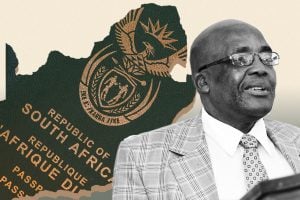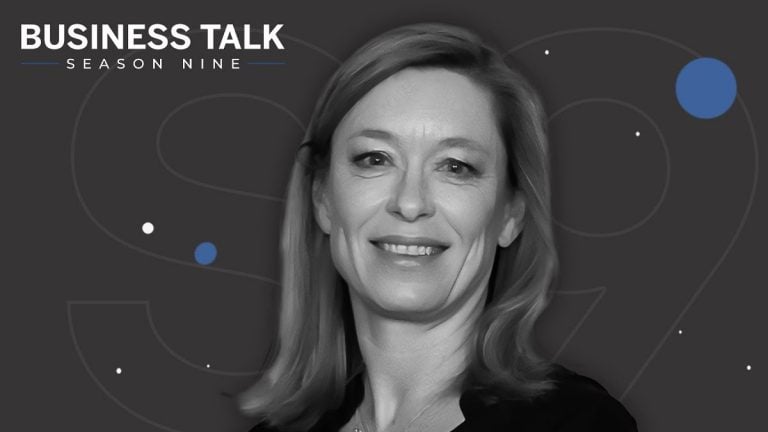New licences coming for Netflix, Disney Plus and other streaming services in South Africa

On-demand and digital streaming services like Netflix and Disney Plus may soon have to be licenced to continue operating and providing services in South Africa – and be more strictly subjected to local content regulations.
These are some of the key proposals from the Department of Communications and Digital Technologies (DCDT) in its draft white paper on Audio and Audiovisual Media Services and Online Content Safety, published for public comment on Monday (31 July).
The draft paper presents the government’s plans for a complete overhaul of the licencing regime for audio and audiovisual content services (AAVCS) in South Africa, which includes everything from traditional broadcasters like the SABC to streaming services like Netflix.
It includes a host of high-level policy proposals relating to the activities of these services in the country, with the aim of promoting socioeconomic development and investment in the sector.
Cutting through the policy talk, one of the key issues the draft paper wants to tackle is that of licencing and of content providers – local and international – operating in South Africa.
Digital services and streamers are not currently required to hold any type of content licence in South Africa, putting them at odds with more traditional services like the SABC and DStv that do. This means that services like Netflix and Disney+ are not under the same scrutiny as licenced operators, nor are they beholden to specific public interest licence clauses.
Given how the broadcast and content industry has changed over the years, the department is now trying to update its regulations to keep up with the times by redefining what these platforms mean in law.
This includes killing older definitions of broadcasters and redefining them in terms of “audio and audio-visual content services”.
According to the department, this is in line with most countries that are formulating policy frameworks that allow traditional analogue content services to play on the same field as these new digital services.
The proposal is to distinguish between traditional broadcasting services (linear), Video on demand providers and video sharing platforms (non-linear) in a graduated fashion and create a level playing field between competing services by imposing regulations and public interest obligations on all licensees.
Licence holders will be obligated to ensure that local content is produced and promoted. This won’t necessarily be through strict quotas, but rather through a host of methods, such as paying money into a fund to promote local productions.
New licences
To achieve this, the department wants to create individual licences – for groups that make use of spectrum for radio or broadcast frequencies – and “class licences” for the services that do not use spectrum (or are otherwise exempt from individual licences) but still operate content services in South Africa.
Class licences would apply to any services offering internet content, the department said.
For now, video-sharing services (like YouTube) are the only class of service currently exempt in the proposals – though the draft paper makes provision for more exemptions at the discretion of the minister or regulator.
“There are three broad types of AAVCS using electronic communication networks and which will fall within the new proposed regulatory framework. These are linear broadcasting services, non-linear on-demand content services and video sharing platform services (VSPS). The first two types require licensing, and the third type VSPS is exempt from licensing, but not from regulation,” it said.
Under the proposed licencing framework, Satellite pay-TV platforms (like DStv), IPTV, Digital terrestrial, Video OTT (Netflix, Disney+) and audio on-demand services will all require licensing – effectively levelling the playing field between them.
According to the draft paper, the department has taken the position that the issuing of licences will be based on the income threshold and their impact on the country. The proposed income thresholds for individual and class licences is R100 million and R50 million, respectively.
In practical terms, the paper outlines some examples:
Example 1: Satellite Pay TV
- If the AAVCS is on a satellite platform, it does not use scarce terrestrial radio frequency spectrum in the broadcasting services band; and if it has low audience numbers, low influence, and an annual turnover in the preceding financial year lower than R100 million and higher than R50 million it would require a Class Licence.
- However, if the very same service were to grow over time to have either large audience numbers or an annual turnover of R100 million or greater, it would have to apply for an Individual licence and attract higher levels of regulation and public interest obligations.
Example 2: IPTV
- If the AAVCS is on a managed network in a gated estate (e.g., IPTV), it would not use radio frequency spectrum at all and if the annual turnover and other considerations by the would be exempt from the requirement to apply for a licence.
- However, if the service grew to be offered locally and the annual turnover in the preceding year were R50 million or more it would require a Class licence.
- If the service grew even further to be offered nationally in several gated estates to the extent that either significant audience numbers were attained or annual turnover in the preceding year was R100 million or greater it would have to apply for an Individual licence and attract higher levels of regulation and public interest obligations.
Example 3: On-Demand Internet Content
- If an AAVCS is an on-demand content service on the Internet, it would not use radio frequency spectrum at all. If the annual turnover in the preceding year were less than R100 million and more than R50 million, it would be a class licensee.
- However, if the service grew in popularity in South Africa and attracted significant audience numbers or annual turnover in the preceding year was R100 million or greater, it would have to apply for an Individual licence and attract higher levels of regulation and public interest obligation.

The legislation will give the minister the power to amend the initial threshold every three years to account for inflation, macroeconomic shifts in the economy.
The policy principle with the introduction of the threshold is to ensure that the smaller VOD (SMME) are protected and supported to grow and be innovative, the department said.
“In the interest of fair competition, this threshold will also apply to international (foreign-based) AAVCS who are actively targeting South African audiences and extracting revenue in terms of advertising, subscription fees or other sources from South Africa,” it said.
In such a case, if the global size of the international business is capable of affecting local economic activity, the regulator may issue a license irrespective of the size of its South African annual turnover.
An interdepartmental task team will be set up to report to the Minister on mechanisms to ensure compliance by international AAVCS who meet the licensing criteria but do not have a physical business premises in South Africa and potentially refuse to apply for a licence.
Read: South Africans are cutting out DStv and gym as they try to make ends meet



















